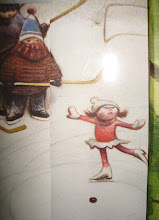
Clement Greenberg’s highly criticized and bold essay “Avant-Garde and Kitsch” (1939) supposes that the resuscitation of high art culture and the remedy for the declining taste of high art will only be resurrected with the acceptance of the form of art known as “avant-garde.” Greenberg’s claim is that popularized art, whose broad likability from an extensive mass of individuals, derives from the ugly, adulterous allurer, otherwise known as Consumerism. Mass marketing of art in popular culture and the copious reproductions of an original, authentic art work taints a pure work and has led to the demise of what is truly art, because society has been able to view art in a way the artist did not intend.
Further, Greenberg’s inexorable abomination of “kitsch” does not end with a defeatist shrug of the shoulders. He states that the solution to reviving the age of art was in the abstract avant-garde alone: “The necessity lies in the fact that by no other means is it possible today to create art and literature of a high order…Since the avant-garde forms the only living culture we now have, the survival in the near future of culture in general is thus threatened”(Greenberg).
Commercialization of art contrasts the elements of the avant-garde because the latter concentrates on the original, untouched moment of the experience between the artist and the materials: “The avant-garde poet or artist tries in effect to imitate God by creating something valid solely on its own terms…The excitement of their art seems to lie most of all in its pure preoccupation with the invention and arrangement of spaces, surfaces, shapes, colors, etc.,” (Greenberg). This notion also attributed to his claim that academic art (mainly from the 18-19th century) is one in the same as popular art (kitsch.)
Armed with this knowledge, works of art by Paul Cezanne and Claude Monet are significantly different. Cezanne’s piece “The Card Players” (1890-1892) displays beautifully the avant-garde’s tendency to focus on the materials’ opportune advantages and to not involve “faked sensations” (Greenberg).
Cezanne had two men sitting in for him for this painting but it is not received with an imitated air. Pointed symmetry, various shifts of color and shadow, lines and contours, considerable stages and degrees of spatial direction and texture seen in the colors and planes are technical and premeditated, yet not without consideration of what the moment is offering. Cezanne’s inspiration and subjects are not quickly and voraciously consumed by popular culture and therefore causes the viewers to analyze the art work with more than a mere glance to glean its true value.


No comments:
Post a Comment